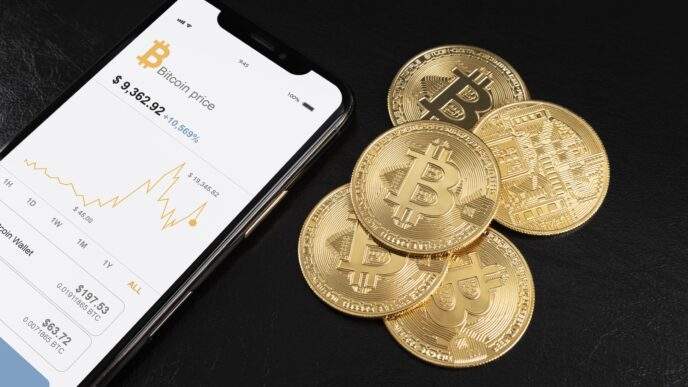“Not your keys, not your coins” isn’t a slogan—it’s a survival mantra in the age of digital sovereignty.
The seismic collapses of Mt. Gox (2014) and FTX (2022) weren’t anomalies; they were wake-up calls. When $8.7 billion in customer funds vanished with FTX, it exposed the fatal flaw of third-party custody: your bitcoin is only as secure as your custodian’s weakest link.
Yet today, As of early 2025, analysts estimate that between 2.3 million and 3.7 million Bitcoins are permanently lost, representing approximately 11–18% of bitcoin’s fixed maximum supply of 21 million coins, with some reports suggesting losses as high as 4 million BTC. This paradox reveals a critical truth: self-custody isn’t just preferable—it’s essential—but it must be done right.
The Custody Spectrum
Custodial Wallets (The Illusion of Control)
- Rehypothecation Risk: Most platforms lend your bitcoin for yield generation. When Celsius collapsed, users discovered their “held” bitcoin was loaned out in risky strategies.
- Account Freezes: Regulatory actions can lock withdrawals overnight. In 2023, Binance suspended dollar withdrawals for U.S. users citing “partner bank issues,” trapping funds for weeks.
- Data Vulnerability: KYC requirements create honeypots for hackers. The 2024 Ledger breach exposed 270,000 users’ personal data despite hardware security.
True Self-Custody
Self-custody means exclusively controlling your private keys—the cryptographic strings that prove bitcoin ownership. Unlike banks or exchanges, self-custody eliminates:
- Counterparty risk (no FTX-style implosions)
- Censorship (no blocked transactions)
- Inflationary theft (no fractional reserve lending)
Conquering the Three Great Fears of Self-Custody
Fear 1: “I’ll Lose Everything If I Make a Mistake”
Reality: Human error is manageable with robust systems:
- Test Transactions: Always send a micro-amount (0.00001 BTC) before large transfers. Verify receipt AND ability to send back.
- Multi-Backup Protocol: Store seed phrases on fireproof/waterproof steel plates (not paper!). Distribute copies geographically—one in a home safe, another with trusted family 100+ miles away.
- SLIP39 Sharding: Split your seed into fragments requiring 3-of-5 shards to reconstruct. No single point of failure.
Fear 2: “Hackers Will Steal My Keys”
Reality: Offline storage defeats remote attacks:
- Hardware Wallets: Devices like Bitkey or Ledger keep keys in “cold storage”—isolated from internet-connected devices. Transactions require physical confirmation.
- Multisig Vaults: Bitvault’s multi-sig system requires attackers compromise multiple locations/devices simultaneously. Even losing two keys won’t forfeit funds.
- Air-Gapped Verification: Use dedicated offline devices for wallet setup. Never type seeds on internet-connected machines.
Fear 3: “My Family Can’t Access It If I Die”
Reality: Inheritance is solvable:
- Dead Man Switches: Bitwarden’s emergency access allows trusted contacts to retrieve encrypted keys after a pre-set waiting period (e.g., 30 days).
- Inheritance Protocols: Bitkey’s inheritance solution shares decryption keys via designated beneficiaries’ emails. Requires multiple approvals to prevent abuse.
- Public Key Registries: Share wallet XPUBs (not private keys!) with heirs. They can monitor balances but not spend, ensuring transparency without risk.
The Freedom Dividend
- Censorship Resistance: Send $10M BTC to a Wikileaks wallet without Visa/Mastercard blocking it.
- Privacy Preservation: Avoid KYC surveillance—non-custodial wallets like Flash require zero ID verification.
- Protocol Access: Participate in bitcoin-native innovations (Lightning Network, DLCs) only possible with self-custodied keys.
- Black Swan Immunity: When Cyprus-style bank bailins happen, your bitcoin remains untouched in your vault.
The Sovereign’s Checklist
- Withdraw from Exchanges: Move all BTC > $1,000 to self-custody immediately.
- Buy Hardware Wallet: Purchase DIRECTLY from manufacturer (no Amazon!) to avoid supply-chain tampering.
- Generate Seed OFFLINE: Use air-gapped device, write phrase on steel—never digitally.
- Test Recovery: Delete wallet, restore from seed before funding.
- Implement Multisig: For > $75k, use Bitvault for 2-of-3 multi-sig setup.
- Create Inheritance Plan: Share XPUBs/SLIP39 shards with heirs + legal documents.
“Self-custody isn’t about avoiding risk—it’s about transferring risk from opaque institutions to transparent, controllable systems you design.”
The Inevitable Evolution: Custody Without Compromise
Emerging solutions are erasing old tradeoffs:
- MPC Wallets: Services like Xapo Bank shatter keys into encrypted fragments distributed globally. No single device holds full keys, defeating physical theft.
- Social Recovery: Ethically designed networks (e.g., Bitkey) let trusted contacts restore access without custodial control.
- Biometric Assurance: Fingerprint reset protocols prevent lockouts from physical injuries.
Lost keys = lost bitcoin. But consider the alternative: entrusting your life savings to entities with proven 8% annual failure rates among exchanges. Self-custody shifts responsibility from hoping institutions won’t fail to knowing your system can’t fail without your consent.
Take action today: Move one coin. Test one recovery. Share one xpub. The path to unchained wealth begins with a single satoshi under your control.















